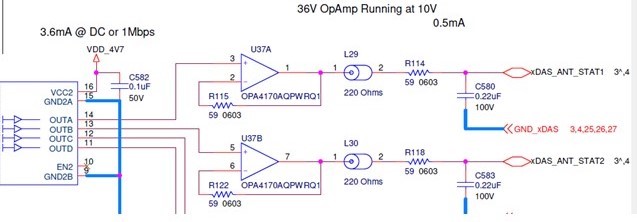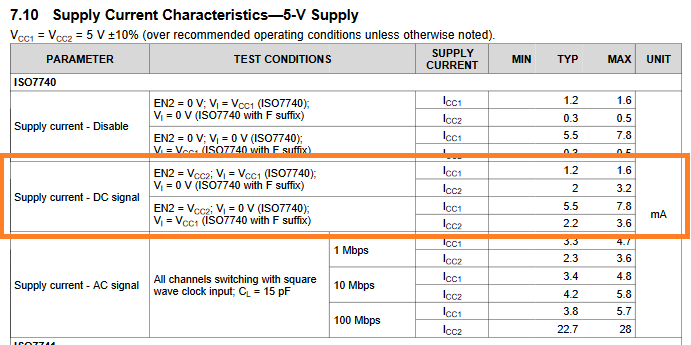Other Parts Discussed in Thread: OPA4170, ISO7740
Does the ISO774x-Q1 family limit output current? The tables and graphs would indicate that it does not because they allow for high currents. I have a potential case where the circuit exceeds the absolute maximum values of ±15mA.
I am trying to simulate a circuit where the output from an ISO7740-Q1 feeds the input of an OPA4170 op amp. Because of the design of the circuit, the simulation shows peak output currents of ±28mA.
TI told me, in a separate post, that these currents can occur if the device driving the op amp input has a fast rise/fall time and is not current limited.
Additional data:
Vcc1 of ISO7740-Q1 is 3.3V. Vcc2 is 5V supply. The output feeds directly into positive input of op amp (no current limiting resistor). The op amp has a 59 ohm feedback resistor and a load of 59 ohms in series with a 220pF cap. I don't have a simulation model for theISO774x-Q1 family, so I am using a simple voltage source.



